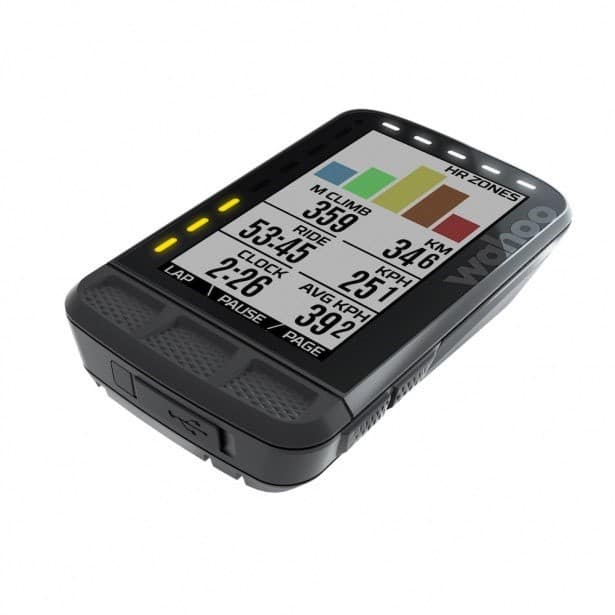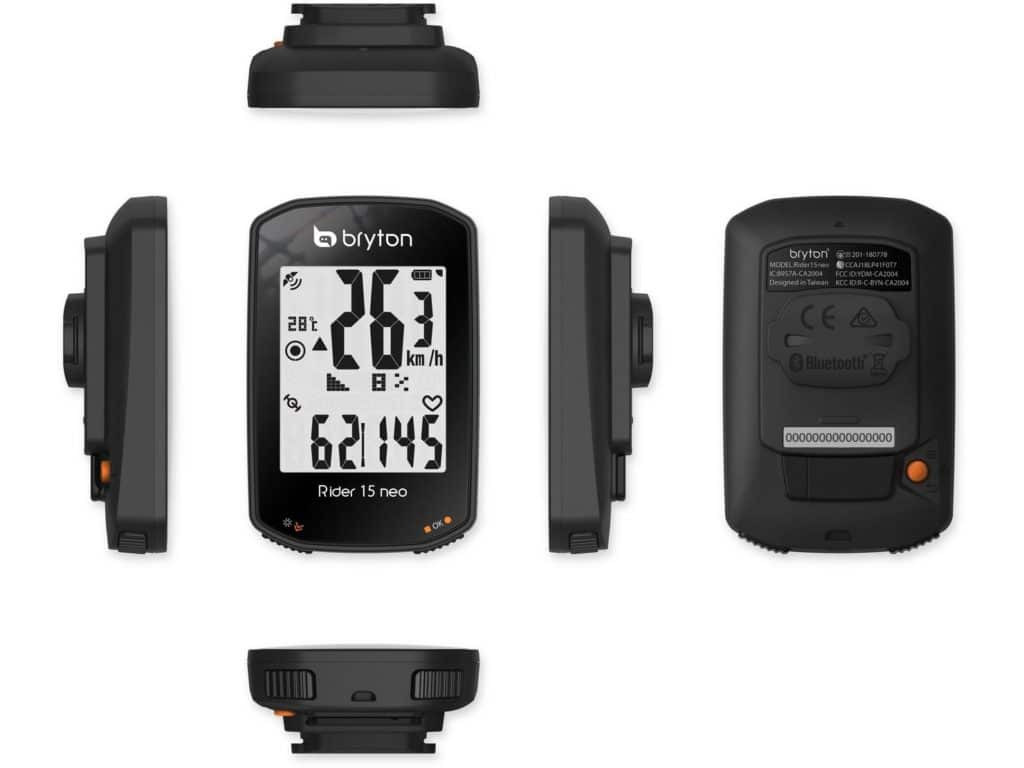One of the most common questions asked when bike riders start their cycling journey is “do I need a bike computer”? Hesitation when buying is understandable: perhaps not all of us are willing to make such a large investment, and, to some, bike computers can seem to suck the fun out of riding. However, bike computers are not solely for riders who need to track their speed, power, and elevation – they can be equally useful for navigation, encouraging the typical casual cyclist to further explore their locality and try more adventurous routes. Whether or not you need a bike computer will depend predominantly on you and what type of riding you do.
Before deciding if a bike computer is a worthwhile investment, we should discuss what a bike computer is, and what it does. Computers are usually mounted to the cockpit – the combination of handlebars and stem – of the bike, visible to cyclists as they ride. There is a range of bike computers available, all equipped with different technologies for different uses.
The most basic computers typically track speed and distance, with the more advanced models capable of navigation alongside logging several other types of data. Most top-of-the-range bike computers allow riders to log their rides, later uploading them to Strava or other ride-tracking apps. Such computers also enable riders to pair other devices that log power and cadence, to more precisely gauge their efforts. The biggest selling point for many is the navigational capabilities of bike computers: users can plan routes in advance, upload them to their devices and follow directions given by the computer during their rides.
Having discussed the uses and abilities of bike computers, you may be thinking that a phone can do most of this. Well, yes, a smartphone has many features that can replicate a bike computer, and many riders will opt to track their rides using their phones rather than invest in a new piece of equipment. However, as many of us know, the battery life of smartphones leaves something to be desired, especially when using mapping apps. For riders who venture out for longer than two hours, relying on a phone for navigation can be risky – bike computers are designed solely to help your riding and therefore generally have a longer battery life, even when using the mapping features.
For more avid cyclists wanting to log their data when riding, bike computers have more advanced features, allowing you to see your power, heart rate, and cadence during your ride. Similarly, the GPS system in top-of-the-range bike computers is superior to that in most smartphones and the maps of bike computers are better suited to guide your riding, particularly for those who explore off-road trails. The design and manufacture of bike computers – specifically more expensive ones – are such that they are considerably more durable than smartphones, designed to withstand extreme conditions, and battering and bruising by the elements.
As with any piece of cycling equipment, there are advantages and disadvantages to buying a bike computer rather than using a smartphone:
Advantages:
Disadvantages:
The ultimate question is one of personal preference. Depending on what kind of riding you do, you may choose to invest in a bike computer, and all the kit to go with it, or you may choose to stick with your tried and tested techniques for mapping your rides. Let’s look at what to consider when deciding whether or not to buy a bike computer.
Where you ride:
As we’ve mentioned, where you choose to ride can impact your decision to buy a bike computer. For off-road riders, the improved precision and accuracy of GPS in the fanciest computers allows for more reliable navigation, as more trails and off-road sections are recognized in their mapping system. If you usually ride on the road and are planning on venturing further afield, the navigation system of bike computers can help you to find your way around the less familiar routes in your local area. Any cyclists riding in new countries or on unfamiliar roads will also benefit from a computer equipped with maps, particularly when mobile data (which can also be costly, particularly when roaming) is not readily available.
How long you ride:
The long battery life is an important selling point for bike computers – many can last up to 12 hours while using maps, a vast improvement on a typical smartphone in constant use. Riders spending long hours out on the bike will likely be more concerned with pacing themselves: the information provided about distance, speed, and power can help with measuring efforts for your long days on the bike.
If you happen to be traveling long distances and away from power outlets for extended period of times, as in bike packing, having a bike computer has obvious navigation benefits, but also allows you to keep your phone charged for emergencies.
Why you ride:
Although any rider can benefit from bike computers, the reasons for buying one will depend on what kind of riding you are doing, and what kind of rider you are. For avid cyclists training and racing to improve their physical performance, bike computers are unquestionably a good investment. The available data when riding with a bike computer – including average speed, current speed, riding time, distance, elevation, heart rate, cadence, and power – can be crucial to maximize your physical gains and better your cycling potential. Almost any serious training plan will involve some data collection and analysis, but fair warning: it can become addictive!
For those riders who are getting involved in cycling for the first time, an entry level bike computer can be a good idea for tracking your trajectory, but certainly is not necessary to become a more serious and accomplished cyclist. Riders who use their bikes as a method of exploration should consider buying a bike computer with GPS capabilities to avoid the risk of getting lost and stuck in unknown territory.
Until recently, Garmin had a near monopoly on the bike computer market, and then Wahoo came along. Wahoo somewhat surprised the industry, forcing Garmin to improve its standards, with a longer battery life and clearer map display, as well as the reintroduction of buttons rather than a touchscreen to operate. Currently, the two brands are the most ubiquitous, but newcomers such as Karoo are looking to challenge the status quo. Once again, the choice between Garmin and Wahoo is mainly one of personal preference – both companies offer several devices at different prices to suit your needs. Let’s have a look at what a few of the computers have to offer.
Not quite the cream of the crop of cycling computers, but nonetheless the choice of many keen cyclists and racers for overall functionality and performance. A mid-range computer that will set you back a reasonable amount, but with a high-standard battery life, display, and durability. If you are serious about tracking your numbers or exploring the world on your bike, this will have you covered. The newest editions see a return to buttons from the previously used touchscreen (still available with the Garmin 840), which some find easier to fiddle with while on the move. The introduction of a colour display makes for clearer maps, however, slightly reduces battery life, albeit still providing 20 hours per charge.
The Edge 540, weighing just 76g, comes equipped with the now standard performance metrics, such as recovery time and heart rate zones. As ever, it can be connected to your other devices via Bluetooth or a USB cable. With the same capabilities as most of its Garmin siblings, and a comfortable size – not as large as the 1040, but with enough screen space to fit all your data – this is our favoured device for all-round training and navigating. Its closest competitor is the Wahoo Elemnt Bolt, with similar capabilities and a nifty phone app for programming.
Wahoo Elemnt Roam
The top-of-the-range bike computer from Wahoo is suited to anyone riding or racing seriously, with some cash to spare. This computer features anything you could want from a bike computer. Featuring a crisp, full-colour display, you can download maps and upload data using either WiFi, Bluetooth, or ANT+. Unlike many devices, you can reroute during your ride, and it comes with pre-installed maps of the majority of countries. Naturally, this computer has all the performance improving technology of other devices, even including preloaded workouts, and is fully button operated. The Wahoo computers feature an integrated mount, which may be preferable for stability and weight-saving reasons but removes the option to customize your cockpit with a funky mount.
If you’re after the best of the best, it comes down to the Elemnt Roam and the Garmin 1040, which offer similar features and functionality. We love the 8.9-centimeter viewing area on the Garmin 1040 for navigation, particularly when off the beaten path, but it isn’t for everyone. If you want the functionality, but prefer to keep the package size smaller – go for the Elemnt Roam.

Bike Computer Wahoo Elemnt Roam
Bryton Rider 15E Neo
If you are thinking of getting a bike computer but are uninterested or can't justify the excess precision of more expensive variations, the Bryton Rider 15E Neo may be ideal for you. Without sacrificing the basic properties of a good bike computer, this device is designed for beginners, more casual riders, and anyone not wanting to fork out $500. All the necessities are here: GPS maps, 16 hours of battery life, clear data display, and ride logging so you can upload your rides on Strava. For less than half the price of many other computers, the Bryton model also allows you to pair a heart rate monitor, and speed and cadence sensors for accurate data tracking.

Bike Computer Bryton Rider 15E Neo
You may also consider entry-level options from a brand such as Cateye Bike Computers, which has been in the cycling computer business for decades and churns out a consistently good product.
If nothing takes your fancy and you decide that bike computers are not for you, there are some methods to use your smartphone in place of a computer. Phone mounts for your handlebars are readily available now, and using route planning and tracking apps such as Komoot and Strava, you will be able to replicate the experience of a bike computer.
The biggest remaining issue with using your phone as a cycling computer is battery life, which can be solved – although somewhat inefficiently – with a portable charger. Any riders who plan to ride for longer than the battery life of their phone and portable charger combined should seriously consider investing in a bike computer. The last thing you want is to run out of charge in the middle of unfamiliar countryside. Besides, who doesn’t like new gear! Whenever you deem it the right time to make the leap, we trust you won’t regret it.